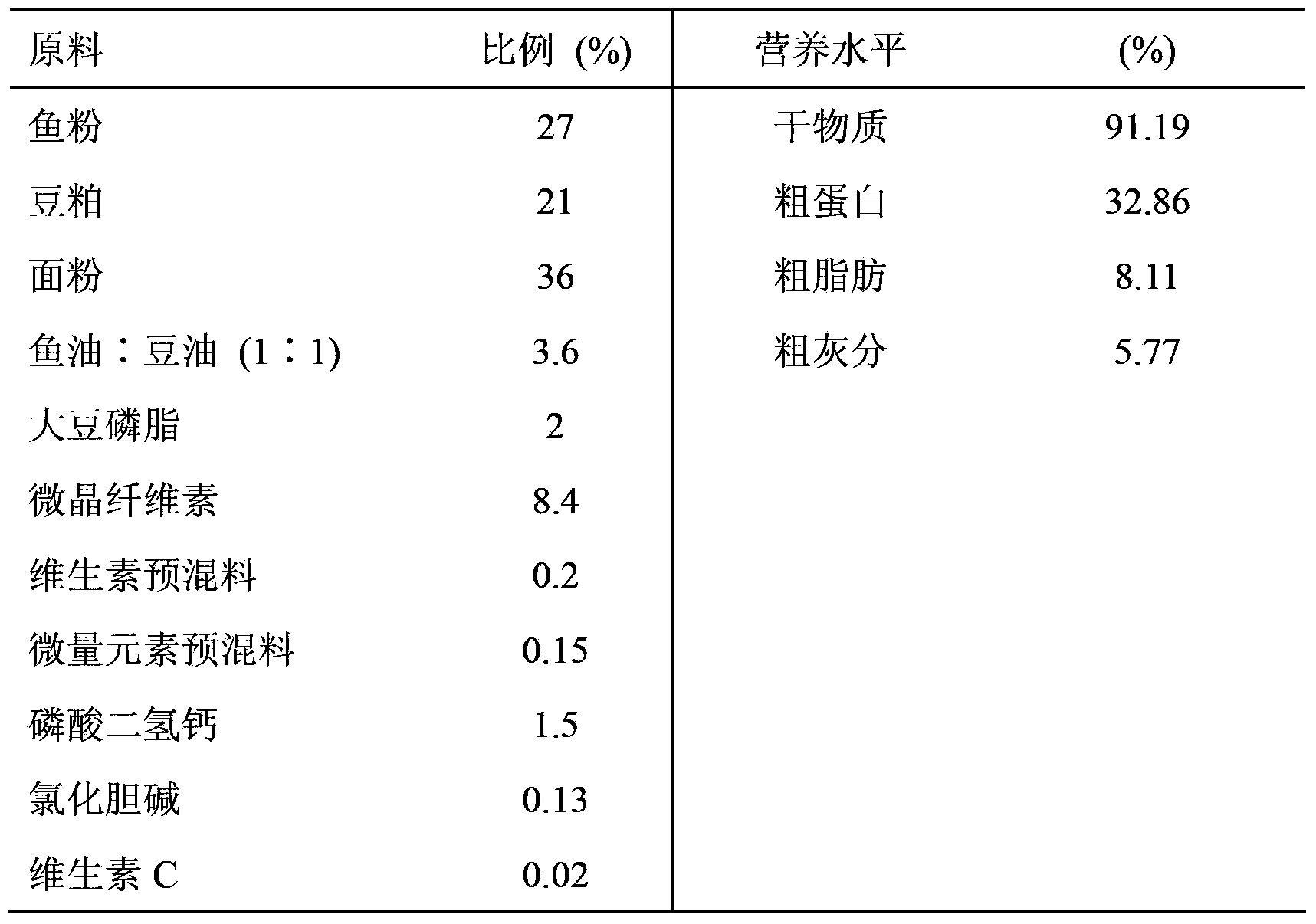Feeding method of tilapia
A feeding method and technology for tilapia, applied in fish farming, application, climate change adaptation, etc., can solve problems such as not being universally recognized and accepted, and fish rarely appear fully compensated growth, and achieve easy operation. , saving labor cost, simple feeding method
- Summary
- Abstract
- Description
- Claims
- Application Information
AI Technical Summary
Problems solved by technology
Method used
Image
Examples
Embodiment 1
[0016] According to the nutritional needs of tilapia, a compound feed for tilapia with a crude protein content of 33% and a fat content of 8% was prepared with fish meal and soybean meal as protein source, fish oil, soybean oil and soybean lecithin as fat source. The feed formula and routine ingredients of the feed are shown in Table 1. According to the feed formula, all raw materials were crushed with a pulverizer and passed through a 40-mesh sieve, and then made into 1.5mm and 2.5mm hard pellet feed with a twin-screw granulator (CD4×1TS multifunctional catalyst molding machine), and dried naturally Store in -20°C refrigerator.
[0017] The juvenile tilapias used in the test were purchased from a farm in Zhangzhou, Fujian Province, transported to the breeding laboratory of Jimei University, disinfected with 2% saline water, and put into two glass fiber reinforced plastic barrels (900L / barrel) with water circulation filter devices for temporary breeding. During the temporary ...
Embodiment 2
[0028] Comprehensive analysis of the feeding effect of different cyclic feeding methods on tilapia in Example 1, we choose the cycle feeding method of starvation for 1 day-feeding for 3 days as an effective feeding method of this embodiment, and use other feed Be verified. Experimental feed source is identical with embodiment 1. Two feed formulations with the same protein level (30%) but different fat levels (5%, 11%) were designed (see Table 4), which were recorded as P30F5 and P30F11, respectively. Feed processing method is with embodiment 1. Experimental fish were also purchased from the farm described in Example 1. The experiment consisted of 4 experimental treatments: daily feeding P30F5 group (C1), starvation for 1 day-feeding for 3 days group (D1), daily feeding of P30F11 group (C2) and starvation for 1 day-feeding for 3 days group (D2 ). The test period is 44 days. Other test methods and feeding management are the same as in Example 1.
[0029] Table 4 Feed formu...
Embodiment 3
[0035] According to the results of Example 1 and Example 2, according to starvation for 1 day-feeding for 4 days, and then starvation for 1 day-feeding for 4 days as a kind of effective feeding method of this embodiment, and using the example 1 and the feed used in Example 2 to verify. Set up 4 experimental treatments: daily feeding P33F8 group, circulating feeding P33F8 group, daily feeding P30F5 group and circulating feeding P30F5 group, using tilapia with an average initial body weight of 9.58 grams for the breeding test, and the test period is 45 days . The source of test fish, test method and feeding management are the same as in Example 2. The results showed that the survival rate of fish in all treatment groups was 100%. The weight gain rates of the P33F8 group fed daily and the P33F8 group fed cyclically were 794.8% and 753.8%, the specific growth rates were 5.78% and 6.53%, and the food intake rates were 4.33% and 5.48% respectively; The weight gain rates of the P3...
PUM
 Login to View More
Login to View More Abstract
Description
Claims
Application Information
 Login to View More
Login to View More - R&D
- Intellectual Property
- Life Sciences
- Materials
- Tech Scout
- Unparalleled Data Quality
- Higher Quality Content
- 60% Fewer Hallucinations
Browse by: Latest US Patents, China's latest patents, Technical Efficacy Thesaurus, Application Domain, Technology Topic, Popular Technical Reports.
© 2025 PatSnap. All rights reserved.Legal|Privacy policy|Modern Slavery Act Transparency Statement|Sitemap|About US| Contact US: help@patsnap.com



